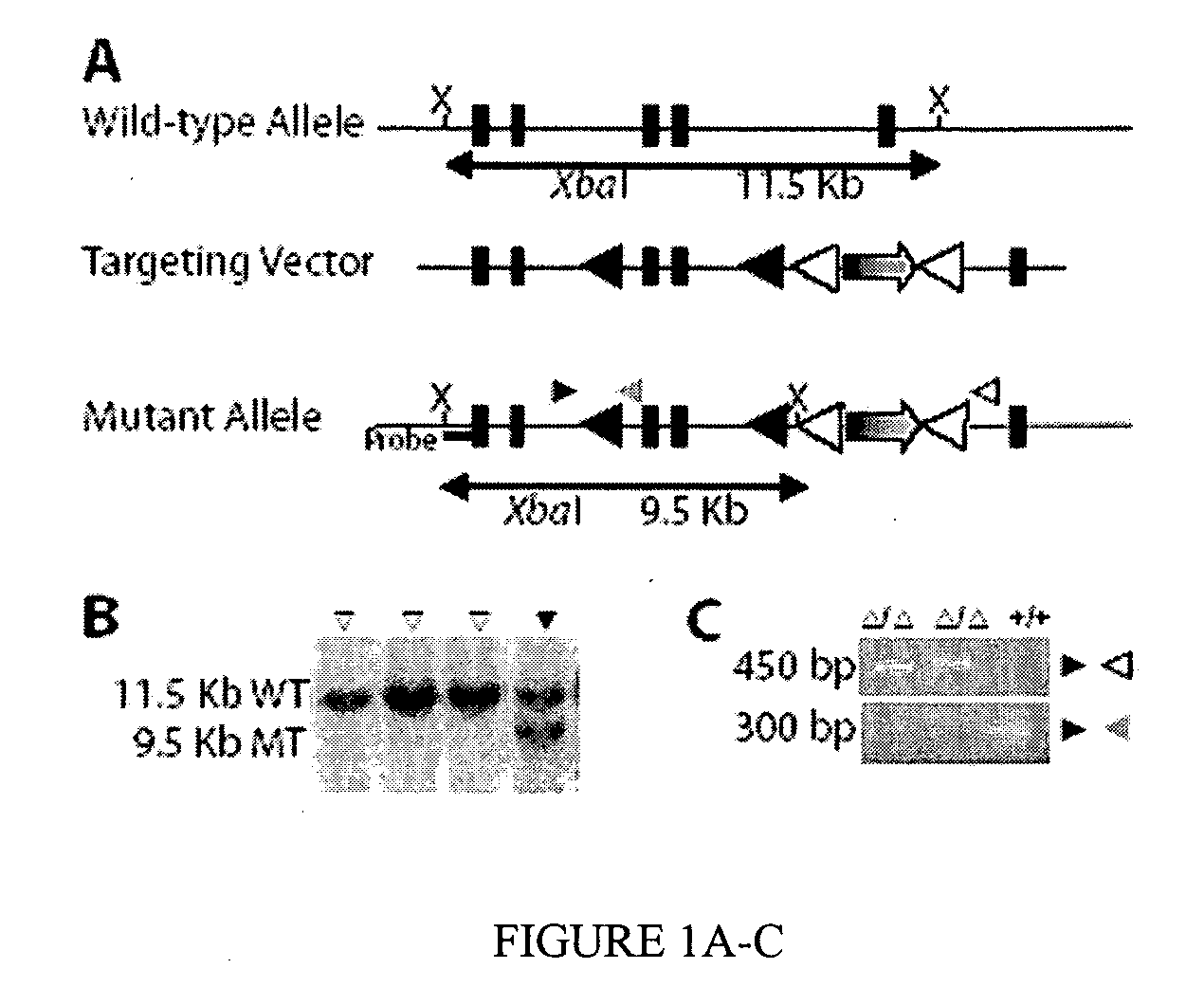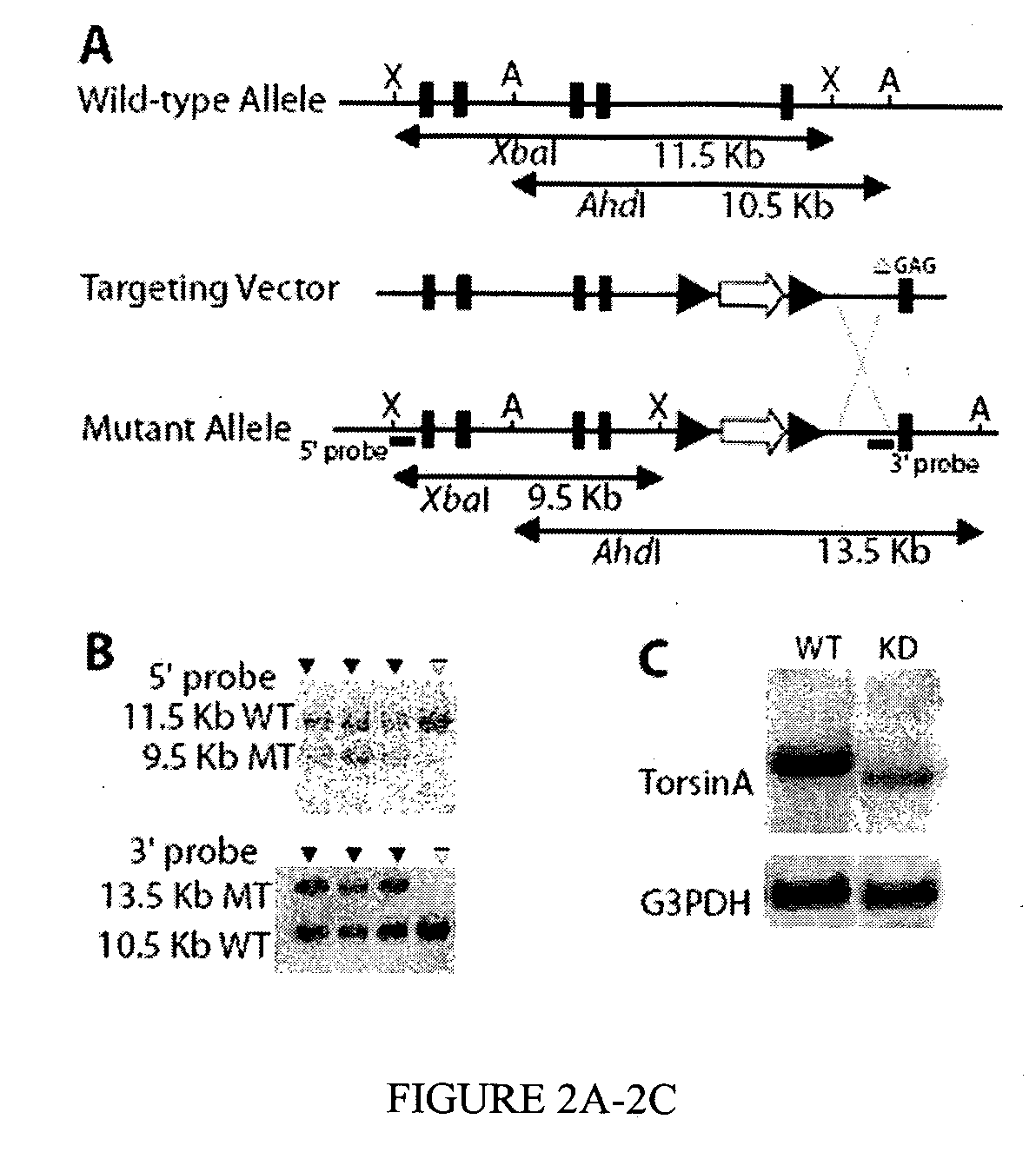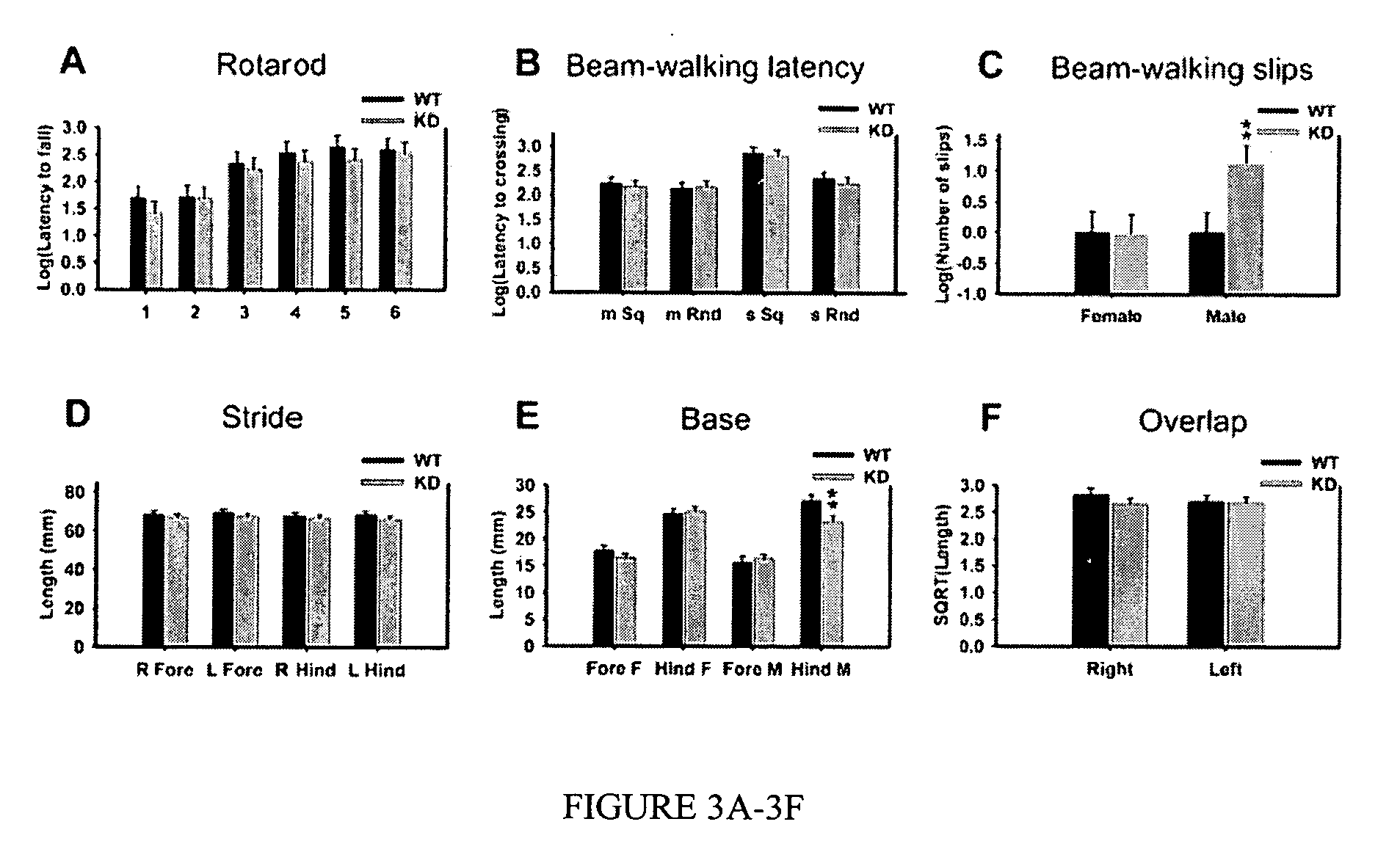Methods and compositions for the treatment of dystonia
a dystonia and composition technology, applied in the field of mammal compositions for dystonia treatment, can solve the problems of model limitations in identifying primary dystonia defects, and achieve the effect of improving motor performance and alleviating symptoms
- Summary
- Abstract
- Description
- Claims
- Application Information
AI Technical Summary
Benefits of technology
Problems solved by technology
Method used
Image
Examples
example 1
Demonstration that Dyt1 is Required for Early Mouse Development: Perinatal Lethality of Dyt1 Knockout Mice
[0077] The Dyt1 gene of 129 / Sv origin was first isolated from a Bacterial Artificial Chromosome Mouse I library, mapped, subcloned and sequenced. To study the in vivo function of torsinA protein, a knockout allele of Dyt1 gene was generated. Dyt1 knockout mice were generated from a line of Dyt1 loxP mouse that have exons 3 and 4 flanked by two loxP sites. The construct contained a loxP sequence in introns 2 and 4 with a PGK-neomycin cassette flanked by FRT sequences in intron 4 (FIG. 1A). Of the 121 transfected ES cell colonies screened, two were found to have undergone homologous recombination and correctly targeted the Dyt1 gene (FIG. 1B). These two clones were expanded and injected into C57BL / 6 blastocysts to obtain chimeric mice. When germline transmitted pups were mated with CMV-cre mice [57], Cre caused the removal of exons 3 and 4 of Dyt1, which was verified by PCR (FIG....
example 2
Motor Deficits and Hyperactivity in Dyt1 KD Mice
[0078] The targeting construct used to generate Dyt1 knockdown (KD) mice had a Dyt1 gene that carried the AGAG mutation (FIG. 2A). This construct was originally made to generate a knockin mouse line. Twenty eight of 73 clones screened had homologously recombined the targeting construct as determined by Southern blot analysis on both sides (FIG. 2B). When the 28 clones were further screened for the presence of the trinucleotide deletion, only three were found to carry the deletion. A highly efficient recombination site must have existed within intron 4 downstream of the PGKneoSTOP cassette and before the ΔGAG site in exon 5. As a result, all DNA sequences downstream of that recombinatorial site including the mutated exon 5 were not incorporated into the genomic DNA. Six of the 25 clones containing the PGKneoSTOP cassette and a wild-type Dyt1 sequence were expanded and injected to produce chimeric mice. The three clones that contained Δ...
example 3
Dyt1 ΔGAA (AE302) Knockin Mice
[0085] The Dyt1 ΔGAA mouse was generated using the same construct that was used for the knockdown (FIG. 2A and B). A re-screening of all the isolated ES cell colonies identified a total of three clones that contained ΔGAG mutation. These clones were used to generate a knockin ΔGAG line. Germline transmission was obtained from a few chimeric animals.
[0086] The heterozygotes named Dyt1 STOP ΔGAA (ΔE302) + / − that carried the ΔGAG mutation were interbred with CMV-cre mice [57]. In the progeny, the stop cassette was removed by cre-mediated recombination and mice that were heterozygous for Dyt1 ΔGAA (ΔE302) mutation (Dyt166 GAA + / − mice) were obtained. This genotype is the same as the patient affected by DYTI dystonia. The production of Dyt1ΔGAA mRNA was checked by sequencing the PCR amplification products that were reverse transcribed from mRNA isolated from Dyt1ΔGAA + / − mouse brains (FIG. 5C). As predicted, both wild-type and ΔGAG mRNAs were present.
[008...
PUM
| Property | Measurement | Unit |
|---|---|---|
| Fraction | aaaaa | aaaaa |
| Length | aaaaa | aaaaa |
| Length | aaaaa | aaaaa |
Abstract
Description
Claims
Application Information
 Login to View More
Login to View More - R&D
- Intellectual Property
- Life Sciences
- Materials
- Tech Scout
- Unparalleled Data Quality
- Higher Quality Content
- 60% Fewer Hallucinations
Browse by: Latest US Patents, China's latest patents, Technical Efficacy Thesaurus, Application Domain, Technology Topic, Popular Technical Reports.
© 2025 PatSnap. All rights reserved.Legal|Privacy policy|Modern Slavery Act Transparency Statement|Sitemap|About US| Contact US: help@patsnap.com



